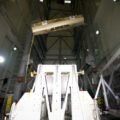New research has shown that the stream of charged particles emitted by the sun known as the solar wind may have played a significant part in making Earth habitable. And they say, this force not only helped bring water to the third rock from the sun, but may have also played a key role in making that water habitable for life.
BACKGROUND: WATER IS LIKELY KEY TO LIFE
On Earth, water is particularly key to habitability. Although this may not necessarily be the case throughout the cosmos, it is a starting point for most astrobiologists and astronomers looking for the signs of life outside of our own planet.
Unfortunately, not all scientists agree how Earth amassed its lakes and oceans, but a new study shows that a significant portion may have come from the solar wind. ANd furthermore, that isotopically light water may have aided the development of life.
ANALYSIS: SOLAR WIND MAKING WATER?
“The isotopic composition of water in Earth’s oceans is challenging to recreate using a plausible mixture of known extraterrestrial sources such as asteroids,” the study published in Nature Astronomy states, noting the shortcomings of current Earth water origin models. “An additional isotopically light reservoir is required.”
That source, they say, could be the sun itself.
“The Sun’s solar wind could provide an answer to balance Earth’s water budget,” the study explains.
To test this theory, the research team from the University of Glasgow used something called atom probe tomography to look at an S-type asteroid named “Itokawa,” hoping to measure its water content and origin. This tool, they state, was able to “directly observe an average ~1 mol% enrichment in water and hydroxyls in the solar-wind-irradiated rim of an olivine grain from the S-type asteroid Itokawa.”
In short, much of the water on that asteroid was likely put there through a constant bombardment of solar wind, which caused a chemical reaction that resulted in water stored within its regolith. Specifically, they state that “H+ irradiation of silicate mineral surfaces produces water molecules.”
OUTLOOK: SOLAR WIND AND LIFE ACROSS THE GALAXY
“The production of this isotopically light water reservoir by solar wind implantation into fine-grained silicates may have been a particularly important process in the early Solar System,” the study states, “potentially providing a means to recreate Earth’s current water isotope ratios.”
The study authors also note that while this finding is significant for understanding Earth’s water origins and its balance of isotopic ratios, it may also be a key factor when searching for similar, water-dependent life on the moons of Jupiter and Saturn, or even on planets outside our solar system.
“These results suggest that the Itokawa regolith could contain ~20 l m−3 of solar-wind-derived water,” the study concludes, “and that such water reservoirs are probably ubiquitous on airless worlds throughout our Galaxy.”
Follow and connect with author Christopher Plain on Twitter: @plain_fiction
